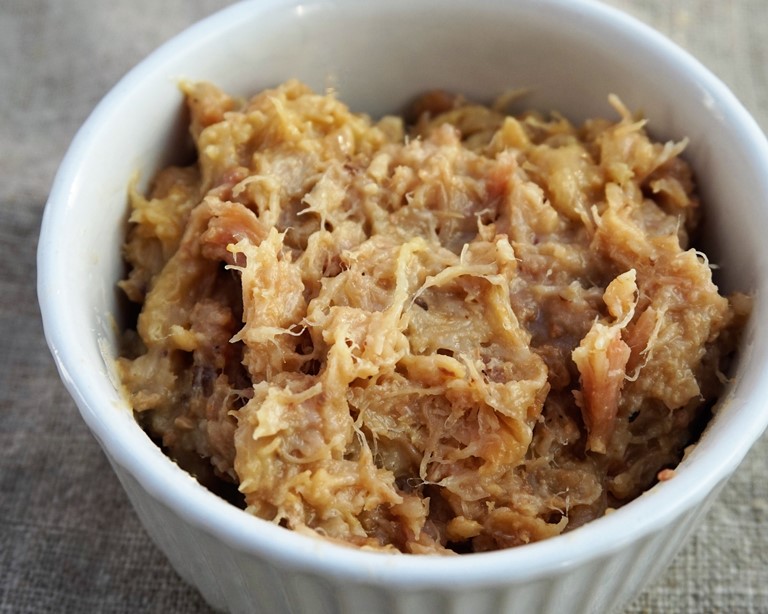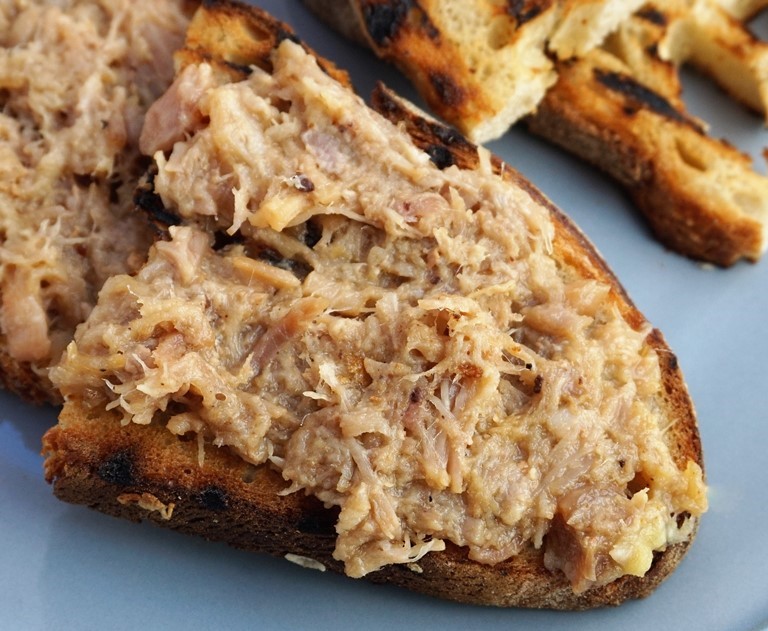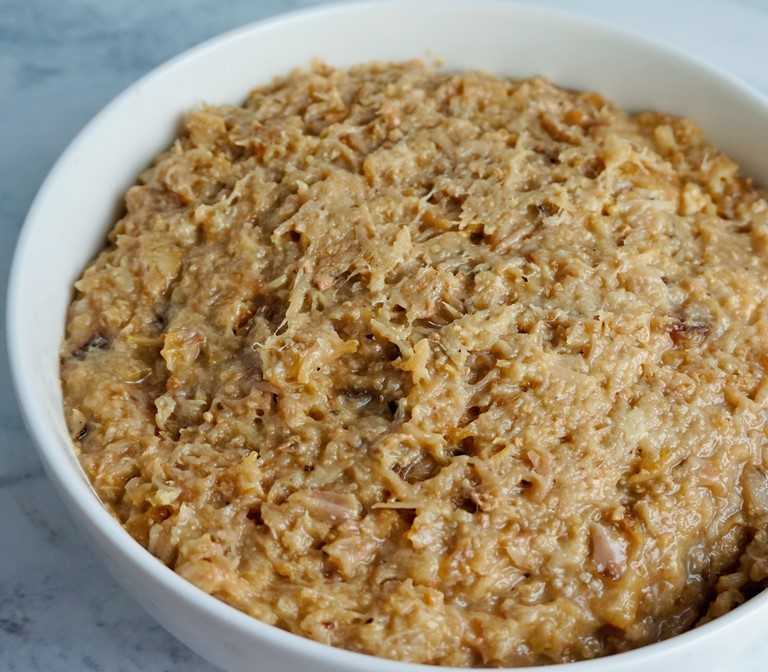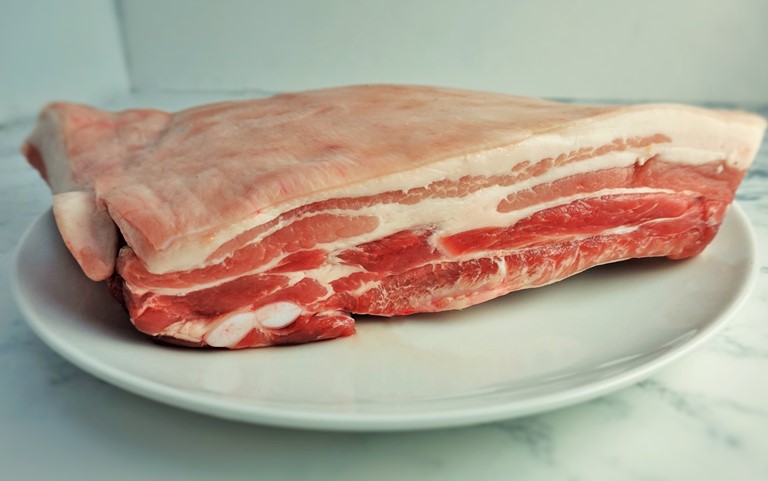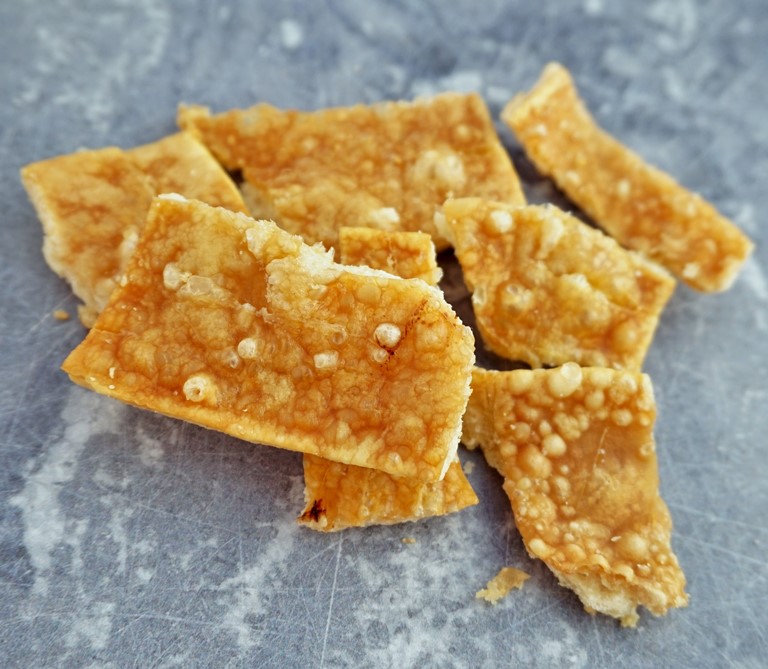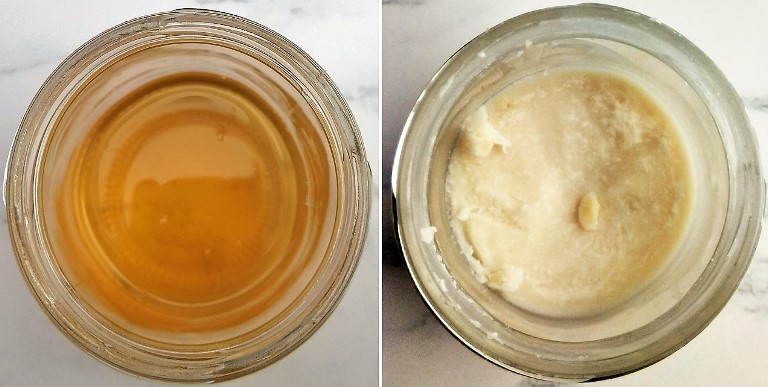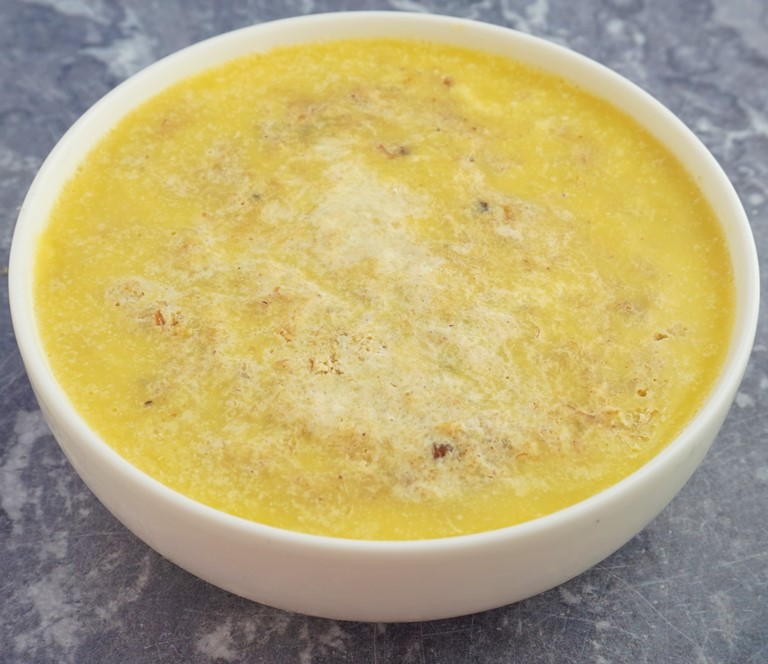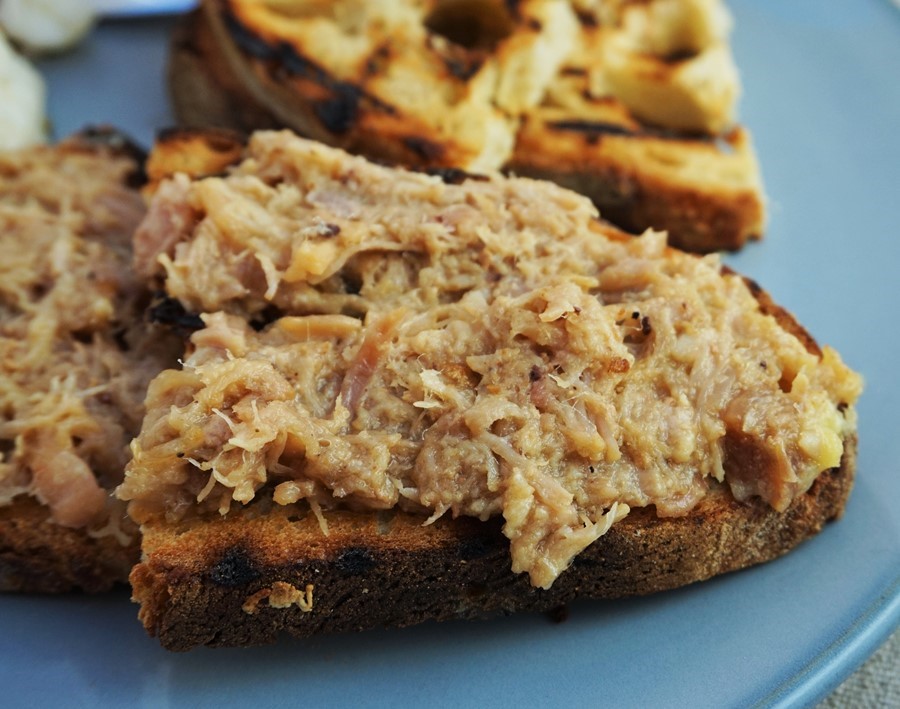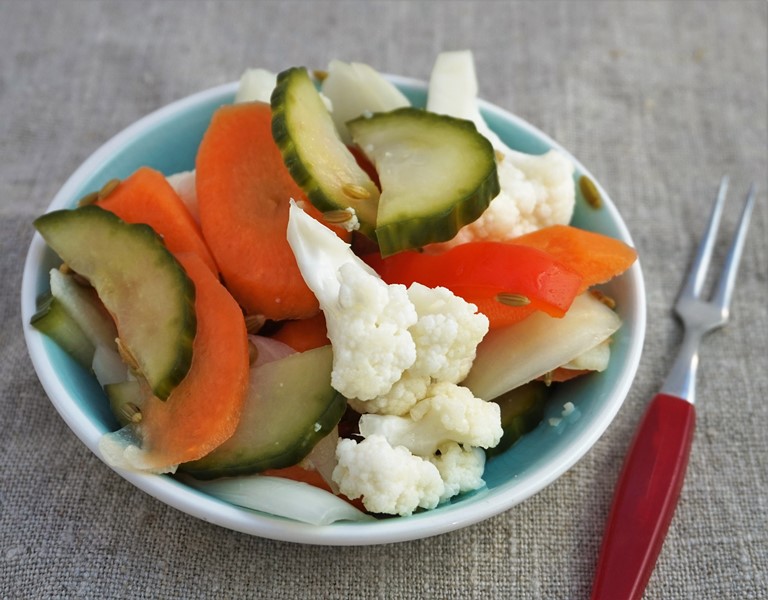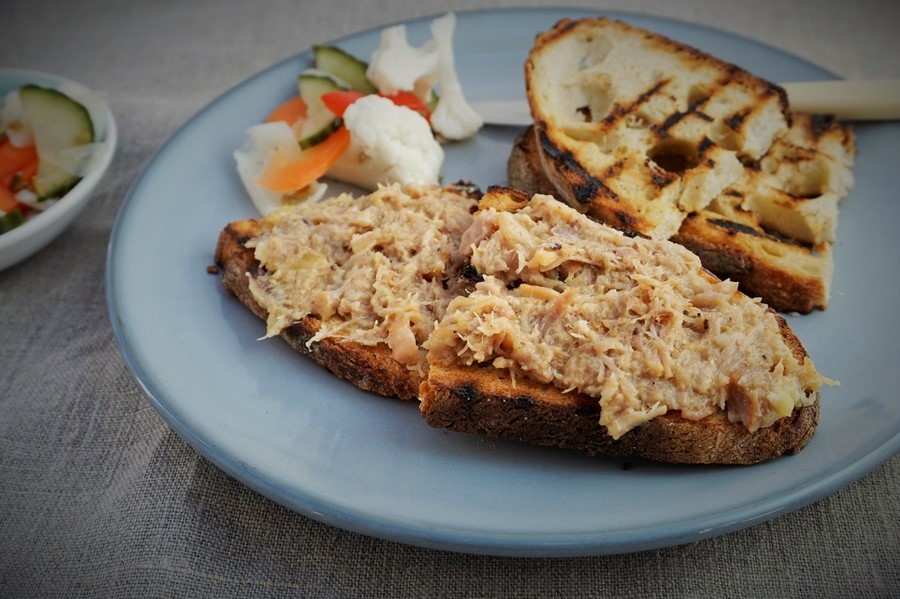Pork Rillettes
Pork Rillettes are a rich treat for unashamed meat lovers. Made with tasty, free-range pork, slowly cooked in home-rendered pork fat, the soft spread is wonderful on toasted bread with homemade, quick-pickled vegetables on the side.
FRUIT & VEG ARE NOT MEAT (YES, THAT DOES NEED SAYING)
While I eat a lot of plant-based meals, I’m an unashamed omnivore who includes moderate amounts of good quality, ethically raised meat in my diet.
So I get rather annoyed when I see and hear comments, currently quite often, such as ‘x is just like meat‘ or ‘jack fruit tastes like pork‘. Because it seems to me that people making those statements must only have ever eaten inferior, tasteless meat. Or maybe <whisper it> they’re lying.
If you don’t want to eat meat, fair enough. I was vegetarian, then vegan, around thirty years ago and I’m certainly not one of the anti-vegan brigade. But, I’m sorry, no one will ever convince me that a fruit is the same as properly reared meat, taste-wise or nutritionally.
But perhaps it’s not so surprising that there seems little difference between poor quality meat and the fake stuff. Take the now ubiquitous pulled pork as an example. Often consisting of tasteless pork smothered in sickly sweet sauce, maybe people should be forgiven an inability to distinguish between that and a fruit!
Personally, I stopped buying mass-produced, supermarket pork years ago, fed up with the lack of flavour as well as concerns over animal welfare.
However, good free range pork, ethically raised, is an entirely different matter. As one sensible person (currently on a vegan diet) commented when we were discussing this on Twitter, pork is ‘so much more than a texture‘. Hear, hear.
But what finally spurred me to post this brilliant recipe for Pork Rillettes was hearing on the radio the owner of a vegan cafe saying, ‘meat doesn’t taste of anything anyway; it’s the sauces and stuff you have with it‘.
Really? If anyone out there agrees with that, please get yourself some proper free range pork, make my Pork Rillettes and reconsider.
FREE RANGE PORK
Pretty much all the pork I eat these days is from Packington Free Range, based in my home county of Staffordshire.
You can buy it from loads of decent, independent butchers. I currently get mine from either The Village Butcher Ipstones or Denstone Hall Farm Shop. But it’s widely available; when we go on holiday to Anglesey, we can even buy it from the local butcher there.
Besides having led a much happier, natural life, I think free range, traditionally slow-raised pigs have a fabulous flavour. If you don’t already know one, find a local supplier of free range pork where you live. Pork Rillettes are really not worth making with bog-standard, supermarket meat.
Click here to read about pork labeling & buying free range or other higher welfare meat
PORK RILLETTES
Containing nothing but tasty free range pork, pork fat, butter, salt and pepper, my Pork Rillettes are the perfect retort to those who think pork can be sneakily replaced by either a darned fruit or, even worse, some lab-grown Frankenfood. This is a rich, fatty and unmistakably meaty delicacy. Although food writers are often told to avoid the word unctuous, in this case I think it’s absolutely correct.
Full of flavour, Pork Rillettes are a lip-smacking treat spread on toast with a few lightly pickled veg on the side. Eat as a snack, lunch or share with only your very best friends as the knockout first course of a special meal.
So, what exactly are rillettes? This French term means meat such as pork, rabbit or duck slowly cooked in fat until completely tender. It’s then mixed with the cooking fat and juices so that it has a soft, spreadable consistency.
In Britain, we usually call such delights potted meat. But, these Pork Rillettes are so full of piggy flavour, I reckon that, should we wish to rename them via a public vote, the winner would probably be Porky McPorkface.
I’ve used belly of pork in the recipe, but you can use shoulder.
Either way, take off the skin before dicing the meat but don’t discard it! An animal has died for this, so please try to use as much of it as you can. I make fabulously crunchy pork scratchings with the skin – see the Recipe Notes included in the recipe card at the end of the post for how.
HOMEMADE LARD
You’re going to need some rendered pig fat (lard) in which to cook the pork. I told you it was porky, didn’t I?
Unless you can source some quality lard from a butcher, I really recommend making your own. It’s dead simple, honest.
Any butcher selling free range pork is likely to be a good ‘un, so should be happy to provide you with some fat too. When the butcher at Denstone Hall was preparing my belly of pork, I just asked if I could have the piece of fat he ripped off the bottom of the joint. This was going in the bin anyway, so I got it for free.
At a pinch, you could use only butter to make your rillettes – see my Homemade Potted Beef recipe for an example of this. But if you’ve gone to the trouble of getting excellently flavoured pork, why not use its tasty fat too?
All you do is chop the fat into pieces about 1 centimetre square then put in a covered pot in a low oven. After an hour or so, you’ll have golden, liquid fat. Tip it in a jar and, when it’s cool, it’ll be beautiful, off-creamy-white lard. I didn’t have quite enough lard for all my pork, so used a 70:30 ratio of homemade lard and butter.
SIDE BENEFIT
Incidentally, once the lard has been rendered and strained off, you’ll be left with crispy little bits of fat, a bit like the underside of a pork scratching.
These are lovely little nuggets, but even I couldn’t eat all of them so they were shared with the dog. That only seemed fair as he’d been sitting in front of the oven, drooling and crying with desire, all the time the rendering was going on.
STORING PORK RILLETTES
Once you’ve made your rillettes, they’ll need to cool down. I pack them into one large bowl or smaller, individual ramekins. Traditionally, before the days of refrigerators, extra fat was poured over the top to form a seal. This would allow the rillettes to be stored for lengthy periods without going off.
Although it would be a miracle if my Pork Rillettes weren’t scoffed within a couple of days, I still like to cover the tops with melted butter. Partly as a nod to tradition, but mainly because I love butter! If you prefer, leave it off. Or you could use more pork fat if you have enough and really like pork fat.
Once the butter’s set, I cover the bowls with brown paper and leave in the fridge until needed.
SERVING PORK RILLETTES
To serve, you’ll want to bring the rillettes up to at least room temperature. Otherwise, they’ll be way too firm to spread. My preference though, is to warm them (in a microwave), just enough so that the fat starts to melt. This helps to bring out the flavour too.
I think soft, slightly melting, Pork Rillettes are best slathered on crispy toasted or griddled homemade bread.
To contrast with the rich fattiness, I like to serve crunchy pickles on the side. Quick, homemade mixed vegetable pickles are perfect for this. Start them off the night before you want to eat them.
Quick Homemade Pickles
- Prepare some raw veg (e.g. onion, carrot, peppers, cucumber, cauliflower, radish) and cut into bite sized pieces. Place in a clean jar.
- Bring to a boil equal amounts of water and a mild vinegar (e.g. rice vinegar) to which you’ve added salt and sugar to taste. Optional: add a few spices such as peppercorns, fennel, coriander, mustard or cumin seeds.
- When the salt and sugar are dissolved, take the liquid off the heat and pour over the vegetables. Leave to cool, then put in the fridge until ready to serve with your Pork Rillettes.
Give them a go, and I think you’ll love these Pork Rillettes as much as I do.

Pork Rillettes
Pork Rillettes are a rich treat. Made with tasty, free-range pork, slowly cooked in home-rendered pork fat, the soft spread is wonderful on toasted bread, with pickled vegetables on the side.
Ingredients
- 1 kg belly of pork, skin removed see Recipe notes for how to make pork scratchings from the skin
- salt & pepper to taste
- 100 g fat (e.g. lard, butter, goose fat or a mixture of these) see Recipe Notes for how to make your own lard
- butter or lard to seal the finished rillettes optional
Instructions
-
Preheat the oven to 150C/130C fan/Gas 2
-
Dice the pork belly into 1-2 cm dice and put in a heavy lidded casserole dish which has a lid. If there are bones in the pork, add those to the casserole too as they'll add flavour.
-
Season lightly with salt and pepper.
-
Distribute the fat over the top of the pork, put the lid on and place the casserole in the preheated oven.
-
Cook until the pork is very tender and easily comes apart with a fork (approx 4 hours). Stir occasionally to ensure it's not sticking to the pot.
-
When the meat is done, shred with two forks: better still, use your hands when it's cool enough. Make sure you remove bones (scraping off any meat first), gristle or cartilage.
-
Mix together the shredded meat and fat. Taste and add more salt and pepper if liked.
-
Pack into a bowl or individual ramekins.
If liked, melt more fat and pour over the top of the rillettes to seal them.
Cover with paper and store in the fridge.
-
Serve, gently warmed so the fat starts to run, with bread, preferably toasted, plus pickles.
Recipe Notes
Homemade Lard
Ask your butcher for pork fat trimmings e.g. taken from the underside of a pork belly. Cut the fat into small dice and place in a heavy, covered pot in a low oven. After about an hour, the liquid fat should have rendered out. Strain and store in a jar in the fridge.
Pork Scratchings
If you've saved the skin from the pork belly, then it's easy to make into pork scratchings. Just season the skin with salt, place it on a rack in a roasting tin and cook in a low oven until bubbly and crispy. Cool and break into pieces.


